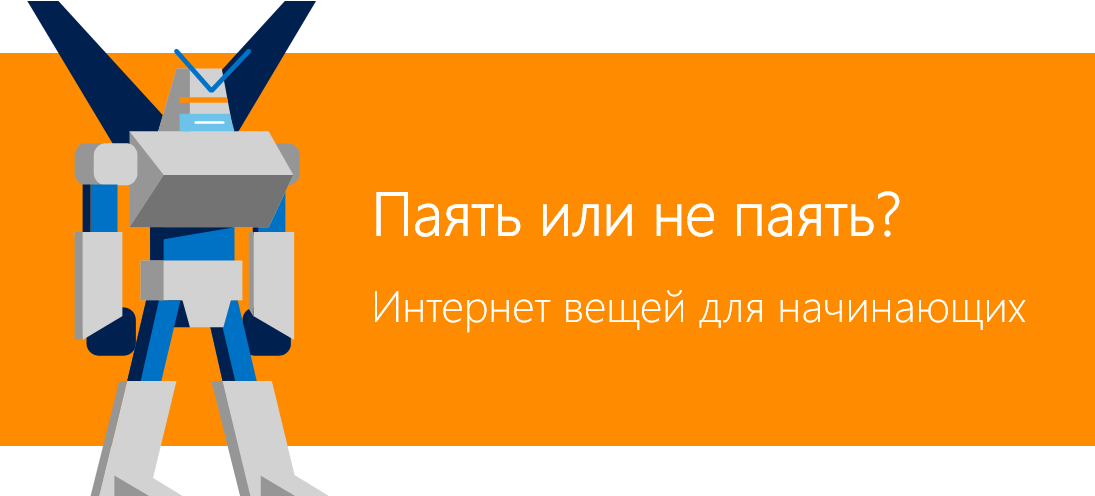To solder or not to solder? Internet of things for beginners

I don’t understand anything in electronics, I have never worked with cards and microcontrollers, I haven’t soldered, but after watching The Maker Show, I’m already thinking about whether to order Arduino or Raspberry Pi for me.
I recommend this show to those who are just starting to study the subject of the Internet of Things. For you, I did a review of the major releases of the show.
1. Introduction to electronics
')
How to make the LED glow with lemon?
Microsoft technology evangelist David Crook conducts several experiments illustrating the basics of electronics.
In the first experiment, he makes batteries from lemons, which cause the LED to glow.
From the experiment we conclude that the serial connection of lemons increases the voltage at the output and is used for more powerful electronic components. Parallel connection increases productivity, that is, a battery of lemons will work longer.
The second experiment is similar to the experiment with lemons, but instead of lemons it uses finger batteries, as well as a breadboard for creating an electronic circuit and a resistor.
Then a few more experiments follow, in the course of which David Kruk tells which parts the prototype board consists of and answers the question of why a resistor is needed.
2. Flashing LEDs ... And now what?
There will be no lemons in this edition of The Maker Show. It is dedicated to flashing LEDs and Arduino UNO.
Microsoft technology evangelist Brian Sheruin explains what the Arduino UNO board consists of and shows how to program it.
It connects the flashing LED directly to the Arduino and to the breadboard, adds a button, as in the previous release, includes a three-output resistor in the circuit, allowing you to adjust the brightness of the LED.
3. Arduino and servomotors
You have already seen Hello World with LEDs and learned more about electronics. In the third edition, it is time to talk about servo motors and pulse width modulation .
Servomotors are devices for controlling moving parts. They are needed where there are repetitive movements, for example, they can turn the wheel of a car, be used in drones.
Even Airbus uses large servomotors to control ailerons (rolls) , valves, and other aircraft control systems.
Servomotors - one of the most frequently used engines in the development of IoT projects.
Microsoft technology evangelist Sam Stokes talks about the structure of the servomotors and the mechanism of their work and demonstrates how to program the Arduino to work with servomotors.
4. Creation and printing of 3D models corresponding to the size of the real components
In this issue with us is Jeremy Foster. He talks about 3D modeling and 3D printing on the example of the Xbox One controller.
In the video, it creates part of the controller case and the ESP8266 microcontroller, which ideally fit the existing parts.
Jeremy uses Autodesk's Fusion 360 software, which makes it very easy to design a 3D model. The task is further simplified by the online service GrabCAD . It collected ready-made 3D models.
5. How to install Windows 10 on Raspberry Pi 2?
In the next release, Microsoft technology evangelist Kenny Spade will step by step how to install Windows 10 IoT Core on Raspberry Pi 2.
This operating system helps launch universal Windows applications on the Raspberry Pi. Everything Kenny tells is also relevant for the Raspberry Pi 3.
Kenny Spade guides us through all the steps and also shows how to remotely control the device using PowerShell.
6. Basics of soldering
Well, here we come to the main action with which projects in the field of the Internet of Things are associated - soldering. If you seriously decide to do this, sooner or later you will have to start soldering, everyone goes through it.
If you have absolutely no idea how this is done, this video is for you. Arm yourself with soldering irons and see.
The Maker Show regularly releases new releases, the latter, for example, are devoted to wearable devices , stepping motors, and more.
You can follow the shows on Channel 9 .
To solder or not to solder? Definitely solder!
Source: https://habr.com/ru/post/281218/
All Articles